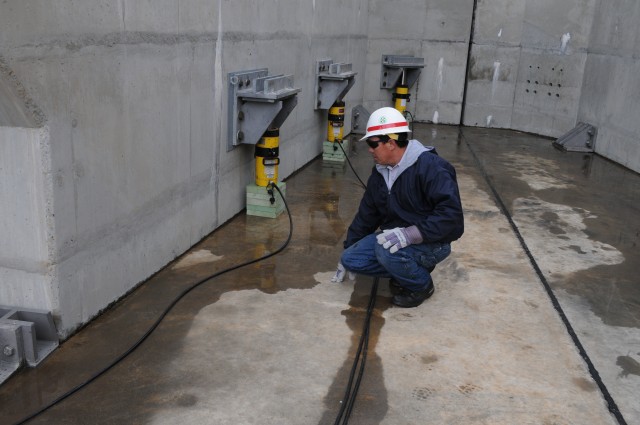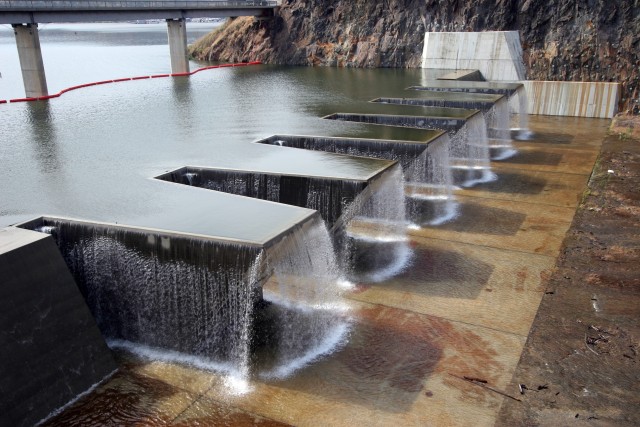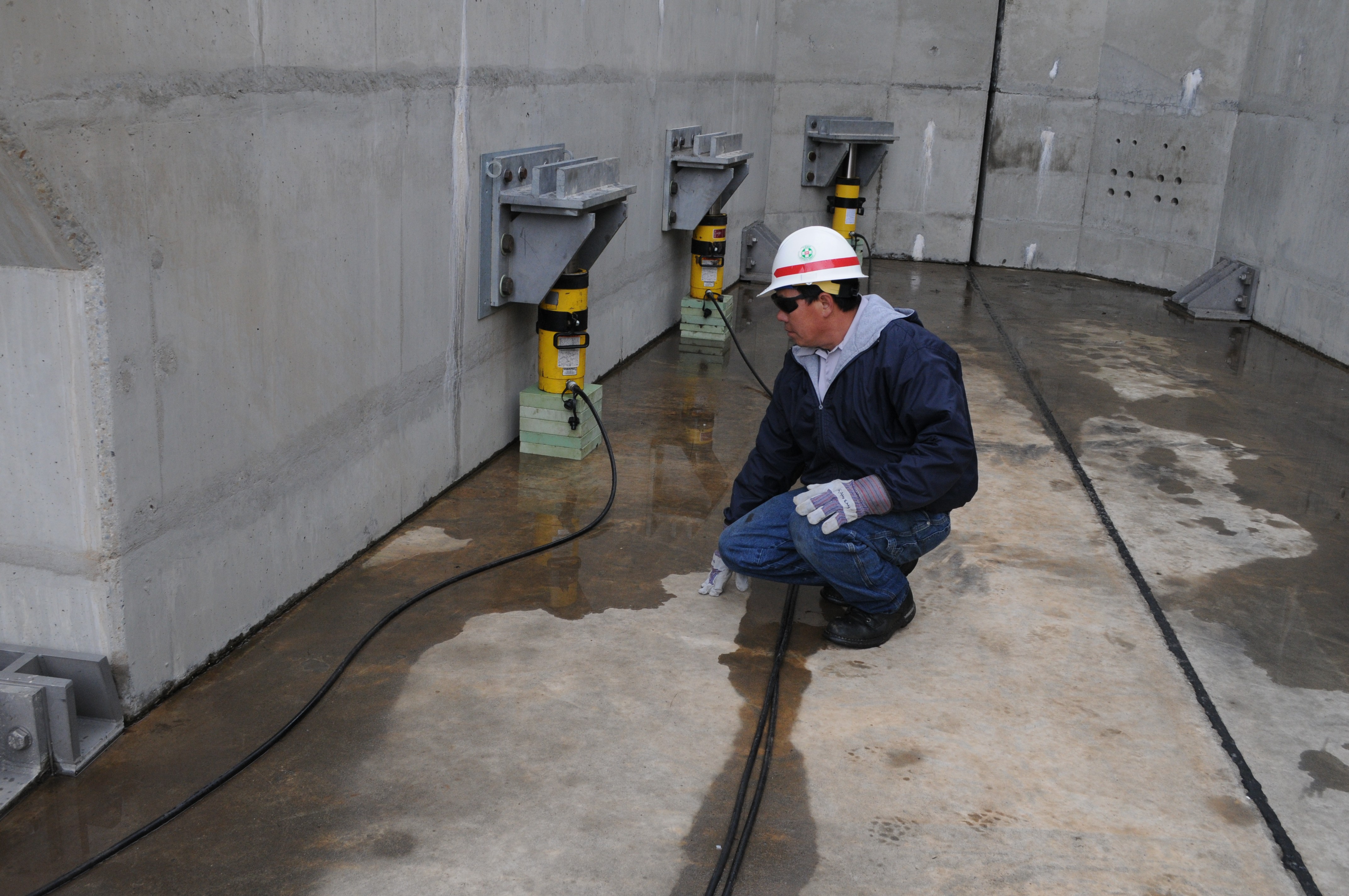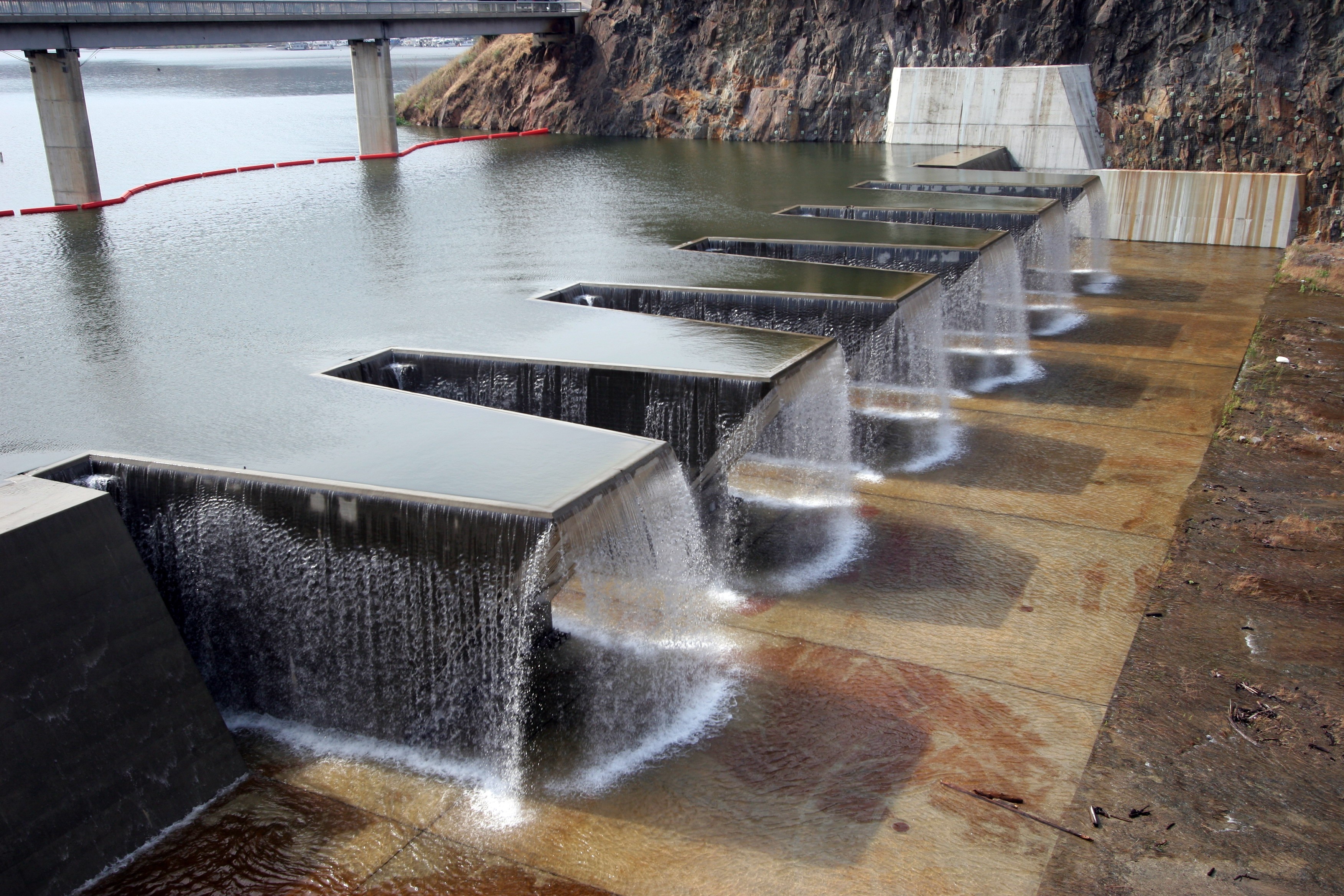LEMON COVE, Calif. -- A quarter of an inch.
It's about the diameter of a pencil, the height of a standard staple or a stack of about 70 sheets of paper.
On Feb. 16, 2011, it was also the amount of separation required here for lifting one of six fusegates with eight hydraulic jacks at Lake Kaweah's Terminus Dam.
The six concrete gates bisecting the canyon appear to just be large trapezoidal concrete segments, perhaps best described as oversized scoop buckets more commonly seen on construction equipment. Each gate weighs approximately 980,000 pounds, or close to 500 tons.
Once the reservoir rises, however, these gates begin to show their true purpose.
Like an electrical fuse, the Terminus's fusegates respond to an overload on the reservoir system and "flip" or tip over. At this point, water can more freely escape the reservoir through the spillway, preserving the dam's integrity.
The Terminus Dam fusegates are designed to individually tip over and allow a flow downstream once water levels reach a certain elevation. The first fusegate is designed to tip once the lake achieves an elevation of 738 feet high, about 23 feet above the top of the fusegates. Gates continue to tip each time the water rises another six inches until all six have been tipped.
Completed in 2005 by the U.S. Army Corps of Engineers Sacramento District, at a cost of approximately $56 million, the fusegates at Terminus Dam are among the largest in the world and serve two purposes.
"Installation of the fusegates increased the reservoir's capacity by about one-third, allowing it to store more than 184,000 acre-feet of water," said Mike Ruthford, the project's technical lead.
At the same time, they reduced the risk for downstream flooding from about a 1-in-50 to less than a 1-in-70 chance each year. In order to ensure the fusegates operate as intended during an emergency situation, regular maintenance must occur.
"We have to jack the fuse gates in order to prevent the bonding of the concrete [between the fusegate and its foundation] so that it maintains its ability to tip over in a flood event," said Lake Kaweah park manager Phil Deffenbaugh.
Over time, the fusegate can begin to bond with the concrete foundation slab it sits on, requiring the fusegates to be periodically jacked, or lifted, to break that bond that has begun to develop.
"Our operation manual calls for them to be jacked about once every ten years," Deffenbaugh said. "Our goal is to maintain a schedule to jack one gate each year."
On Feb. 16, six Lake Kaweah staff members worked through a steady rain and gusty winds, following a strict script for safely operating the jacks and monitoring the fusegate as they raised it just a quarter of an inch.
"It takes about 30 minutes to raise the fusegate," said Corps maintenance worker Victor Paniagua, who operated the hydraulic jacks. "Then we'll run tools beneath it to ensure no bond has been created and lower it back down."
At its peak, more than 5,800 pounds per square inch of hydraulic fluid rushes through a collection of hoses to power the jacks lifting the fuse gates.
"The hydraulic system is very powerful and extremely dangerous, so we have to carefully observe safety guidelines and make sure we don't puncture the hoses," Deffenbaugh said.
Using safe practices to properly maintain the facility and ensure the safety of downstream residents and property is vital.
The Corps and its non-federal partner, Kaweah Delta Water Conservation District - which assumes maintenance costs, including jacking the fusegates - are constantly working to ensure that they function properly if the need arises.
A quarter of an inch at a time.






Social Sharing